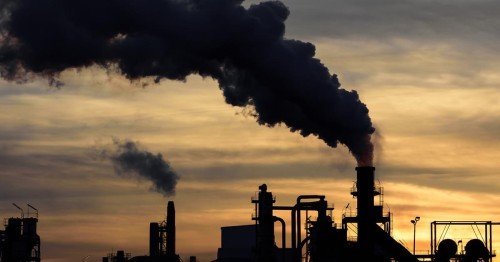
Carbon emissions are one of the most pressing environmental issues of our time. The burning of fossil fuels, such as coal, oil, and natural gas, releases carbon dioxide (CO2) and other greenhouse gases into the atmosphere. These gases trap heat from the sun, leading to a warming of the planet known as global warming. The effects of this warming, including more extreme weather, rising sea levels, and loss of biodiversity, are already being felt around the world.
The largest source of carbon emissions is the burning of fossil fuels for energy. This includes electricity generation, transportation, and industry. In 2019, the top emitting countries were China, the United States, and India, which together accounted for more than half of the world's energy-related CO2 emissions.
To combat carbon emissions and slow the rate of global warming, there are several strategies that can be employed. One key strategy is to transition to renewable energy sources, such as solar and wind power. These sources of energy do not emit CO2 when they are used, and they can be generated locally, reducing the need for energy to be transported long distances.
Another strategy is to improve energy efficiency in buildings and industry. This can be done through the use of more efficient technologies and through changes in building design and construction. For example, buildings can be designed to take advantage of natural light and ventilation, reducing the need for artificial lighting and heating.
Transportation is another major source of carbon emissions. Electric vehicles, which do not emit CO2 when they are driven, are becoming more common and more affordable. Public transportation, biking, and walking can also help to reduce emissions.
Carbon capture and storage (CCS) is a technology that captures CO2 emissions from power plants and other industrial sources before they are released into the atmosphere. The CO2 can then be stored underground, preventing it from contributing to global warming. CCS is still in the early stages of development, but it has the potential to significantly reduce CO2 emissions from power plants and other industrial sources.
Carbon pricing is another important strategy to reduce carbon emissions. This can be done through a carbon tax, which puts a price on carbon emissions, or through a cap-and-trade system, which limits the total amount of carbon that can be emitted and allows companies to buy and sell emissions allowances. Carbon pricing provides an economic incentive for companies and individuals to reduce their emissions.
In addition to these strategies, there are also many opportunities for individuals to reduce their own carbon emissions. Simple actions such as using energy-efficient appliances, reducing meat consumption, and reducing air travel can all make a difference. Planting trees and other vegetation can also help to absorb CO2 from the atmosphere.
Climate change is a global problem that requires a global solution. The Paris Agreement, which was adopted by nearly 200 countries in 2015, sets a goal of keeping the increase in global average temperature to well below 2 degrees Celsius above pre-industrial levels and to pursue efforts to limit the increase to 1.5 degrees Celsius. However, more actions are needed to reach this goal, and countries, businesses, and individuals all have a role to play in reducing carbon emissions and slowing the rate of global warming.
In conclusion, Carbon emissions are one of the major environmental issues that we are facing today. The burning of fossil fuels is the primary source of carbon emissions. To combat carbon emissions, we must transition to renewable energy sources, improve energy efficiency, and adopt sustainable transportation. Carbon capture and storage, carbon pricing, and individual actions are also important strategies to reduce carbon emissions. Climate change is a global problem and requires a global solution, and we all have a role to play in reducing carbon emissions and slowing the rate of global warming.








